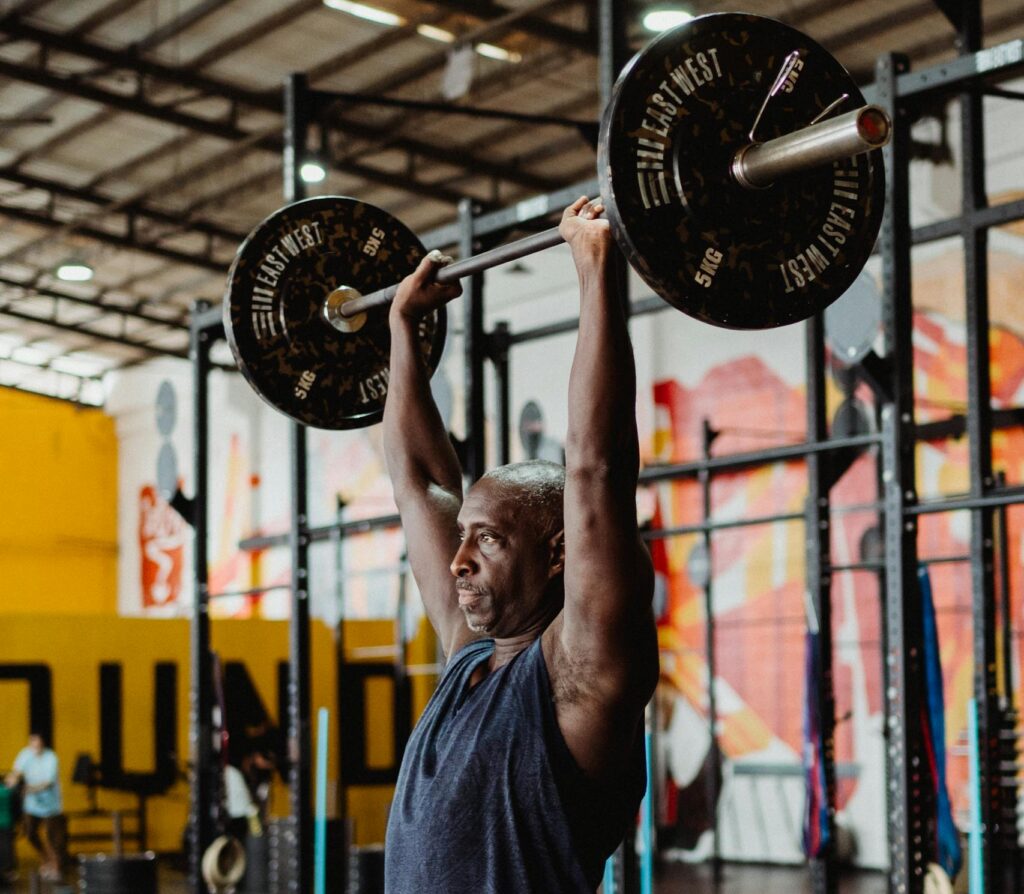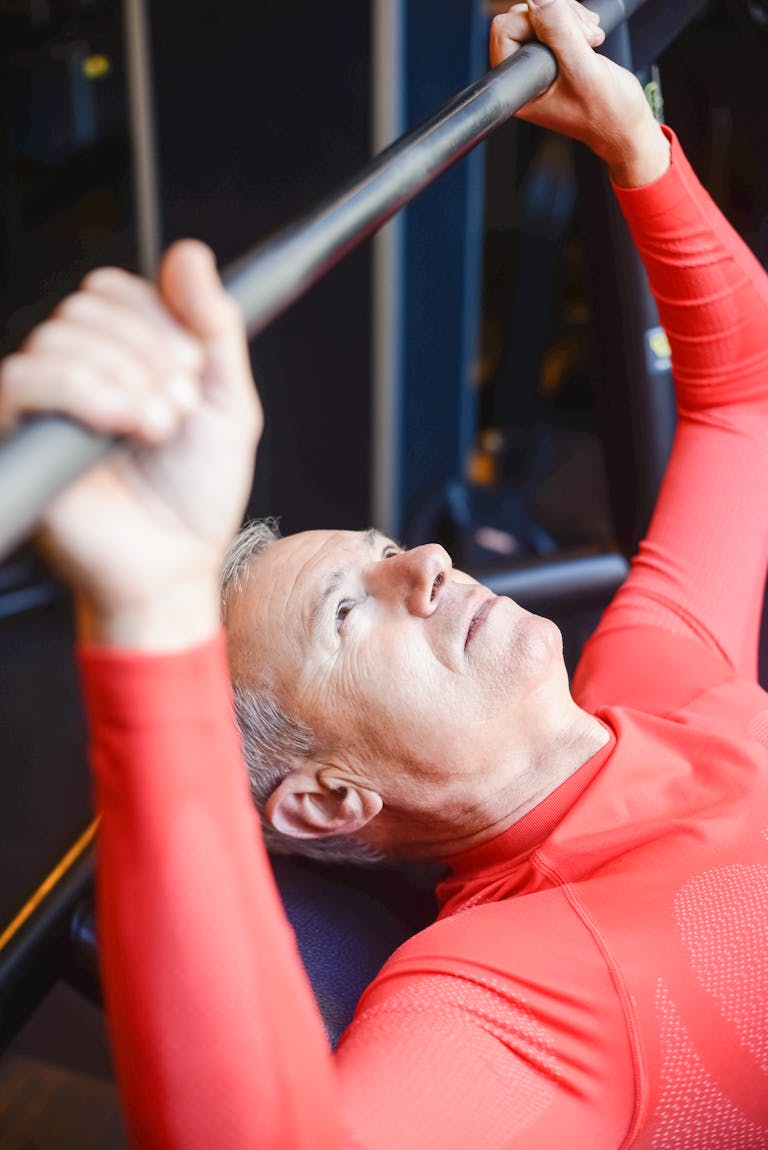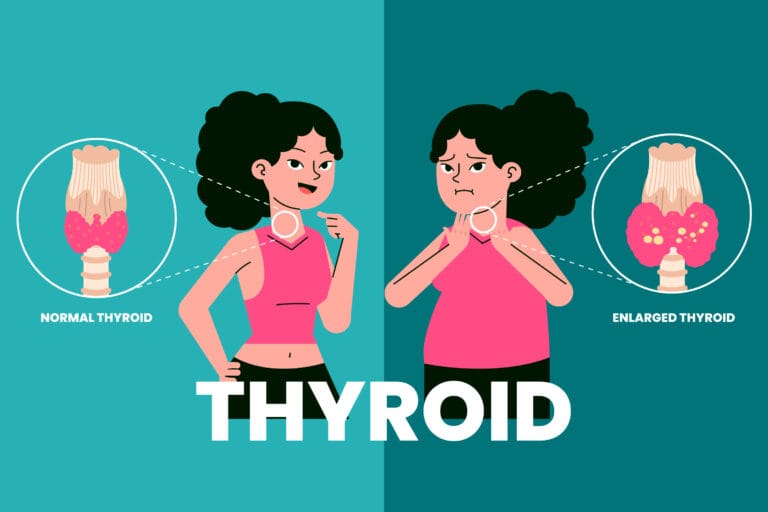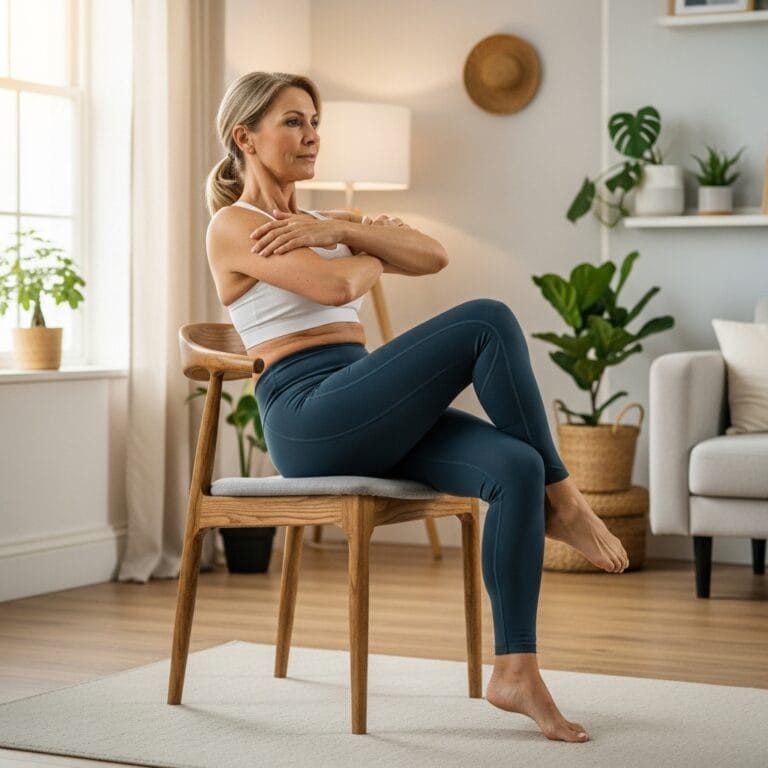FREE SHIPPING OVER $50
The 10 Best Deltoid Exercises for Building Stronger Shoulders
Strong, sculpted shoulders are the hallmark of a well-balanced physique. And to build those powerful delts, you need a workout routine that targets all three heads of the deltoid muscle: the anterior (front), medial (side), and posterior (rear). Shoulders are a crucial player in almost every upper-body movement, so training them effectively is a must. Let’s dive into the best deltoid exercises that will transform your shoulders into powerhouses!
What is the Deltoid Muscle and Why Should You Train It?

The deltoid muscle is the primary muscle responsible for the shape and movement of your shoulder. It consists of three heads: the anterior (front) deltoid, medial (side) deltoid, and posterior (rear) deltoid. These heads work together to move your arms in various directions, whether you’re lifting, pressing, or pulling.
So why should you focus on training your deltoids? Here are a few key reasons:
- Improved Strength and Performance: Strong deltoids play a critical role in nearly every upper-body movement, from pushing and pulling to lifting and carrying. Whether you’re bench pressing or throwing a punch, well-developed delts give you the strength and control you need for top performance.
- Balanced Aesthetics: If you’re after that classic V-tapered physique, your deltoids are essential. They give your upper body width, making your waist look smaller and contributing to a balanced, muscular appearance. Neglecting any head of the deltoid can result in imbalances, affecting both aesthetics and performance.
- Joint Stability and Injury Prevention: Strong deltoids help stabilize your shoulders, reducing the risk of injuries during workouts and daily activities. This is especially important for anyone prone to shoulder strains or imbalances from overworking other muscle groups.
Best Deltoid Exercises
1. Overhead Press (Barbell or Dumbbell)
The overhead press is the king of shoulder exercises. It’s simple but incredibly effective at targeting your anterior deltoid while also working the medial and rear delts.
- Why it’s great: This exercise forces your delts to handle the majority of the weight, helping build mass and strength.
- How to do it: With a barbell or dumbbells, press the weight overhead while keeping your core tight. Lower slowly back to shoulder height.
- Tip: Try seated or standing variations to see what feels best for your shoulders.
2. Lateral Raises
When it comes to medial deltoid exercises, nothing beats the lateral raise. This move directly targets the side of your shoulders, adding width and helping you achieve that “capped” shoulder look.
- Why it’s great: Isolates the medial deltoids, crucial for a balanced shoulder development.
- How to do it: Hold dumbbells by your sides, and raise your arms outward until they’re parallel to the floor. Lower slowly.
- Tip: Go lighter on weight to keep form strict—this ensures the delts do all the work.
3. Face Pulls
Underrated but essential, face pulls are one of the best posterior deltoid exercises. They help with shoulder stability and balance out the heavy front-dominant movements like pressing.
- Why it’s great: Specifically targets the rear delts, which are often underdeveloped.
- How to do it: Using a cable machine with a rope attachment, pull the handles toward your face, keeping elbows high and squeezing your rear delts.
- Tip: Slow down the negative (eccentric) portion to maximize tension on the rear delts.
4. Arnold Press
Invented by Arnold Schwarzenegger himself, the Arnold press is a dynamic move that hits all heads of the shoulder, especially the front deltoid.
- Why it’s great: The rotation involved recruits more muscle fibers than a standard press, offering extra stimulation for your shoulders.
- How to do it: Begin with palms facing you and dumbbells at shoulder height. Rotate your palms outward as you press the weights overhead.
- Tip: Keep the motion controlled to prevent cheating and maximize shoulder engagement.
5. Reverse Pec Deck
For pure rear deltoid exercises, the reverse pec deck machine is a favorite. It isolates the back of the shoulders, helping create balance between the front and back of the delts.
- Why it’s great: The machine keeps you in a fixed range of motion, which makes it easier to isolate the rear delts.
- How to do it: Sit facing the machine, grab the handles, and extend your arms outward until you feel a contraction in your rear delts.
- Tip: Don’t rush this movement—controlled reps are essential for rear deltoid growth.
6. Front Raises
Front raises are one of the most effective anterior deltoid exercises, focusing entirely on the front head of the shoulder. This move will help you create more shoulder definition.
- Why it’s great: Isolates the front delts for added strength and shape.
- How to do it: Holding a barbell or dumbbells, raise the weight in front of you until your arms are parallel to the floor. Lower slowly.
- Tip: Don’t swing the weights—your shoulders should do all the lifting.
7. Bent-Over Lateral Raise
Another solid rear deltoid exercise, the bent-over lateral raise helps target the often-overlooked muscles at the back of the shoulders, which can improve posture and shoulder stability.
- Why it’s great: It hits the rear delts while also giving your traps a good workout.
- How to do it: Bend at the hips with dumbbells in hand, then raise your arms outward until they’re level with your body. Lower with control.
- Tip: Keep your core tight to avoid swinging or using momentum.
8. Upright Row
The upright row is excellent for hitting the medial deltoid and adding definition to your shoulders. It also involves some traps, making it a fantastic all-around upper-body exercise.
- Why it’s great: Trains both the delts and traps, ensuring a balanced shoulder workout.
- How to do it: Holding a barbell or dumbbells, pull the weight up toward your chin, keeping elbows flared out to the sides.
- Tip: Keep your wrists neutral and elbows higher than your hands to avoid shoulder impingement.
9. Dumbbell Shoulder Press
A classic in any shoulder routine, the dumbbell shoulder press focuses on the anterior deltoids while also engaging the medial and rear heads.
- Why it’s great: It builds both strength and muscle mass in the shoulders.
- How to do it: Sit on a bench with dumbbells at shoulder height, and press them straight overhead. Lower with control.
- Tip: Use a full range of motion to maximize shoulder recruitment.
10. Farmer’s Carry
The Farmer’s Carry might seem unconventional for shoulder development, but it’s a powerhouse move for building stability and strength in your deltoids. It works your entire upper body while emphasizing the shoulders, traps, and core, making it a functional exercise that boosts overall shoulder endurance and resilience.
- Why it’s great: This exercise helps strengthen not just your delts but also your grip and core, creating a strong foundation for other upper body exercises.
- How to do it: Grab two heavy dumbbells or kettlebells, stand tall, and walk in a straight line while keeping your shoulders pulled back and core engaged.
- Tip: Start with a weight that challenges you but still allows you to maintain good posture. Increase the distance or weight over time for better results.
How to Solve Shoulder Imbalances
A lot of people tend to overwork their front delts through pressing movements but neglect the rear delts. The result? Shoulder imbalances that can lead to poor posture and even injury. To fix this, make sure you’re not skipping those posterior deltoid exercises and incorporating a balanced approach to shoulder training. It’s all about symmetry, so don’t just focus on the mirror muscles.
Conclusion
By incorporating these best deltoid exercises into your workout routine, you’re well on your way to building bigger, stronger, and more balanced shoulders. Remember, don’t skip any part of the deltoid—front, medial, and rear delts all play crucial roles in shoulder aesthetics and functionality. Train smart, go heavy when you can, and always keep your form on point to avoid injury.
Related Articles
If you found this blog post insightful, explore more meal plans by delving into our related articles:
- The Best Dumbbell Back Exercises: The Only 7 Moves You Need for Strength & Size
- Best Rear Delt Exercises with Dumbbells: A Complete Guide
- The 10 Best Plyometric Exercises for Explosive Strength and Speed
- Muscular Endurance Exercises: Boost Your Stamina & Strength
- Dealing with Roid Rage Symptoms: A Step-by-Step Treatment Guide
- Free One and Done Workout + Plan, PDF & Review
- Top 10 Best Pre Workout For Muscle Gain 2024



